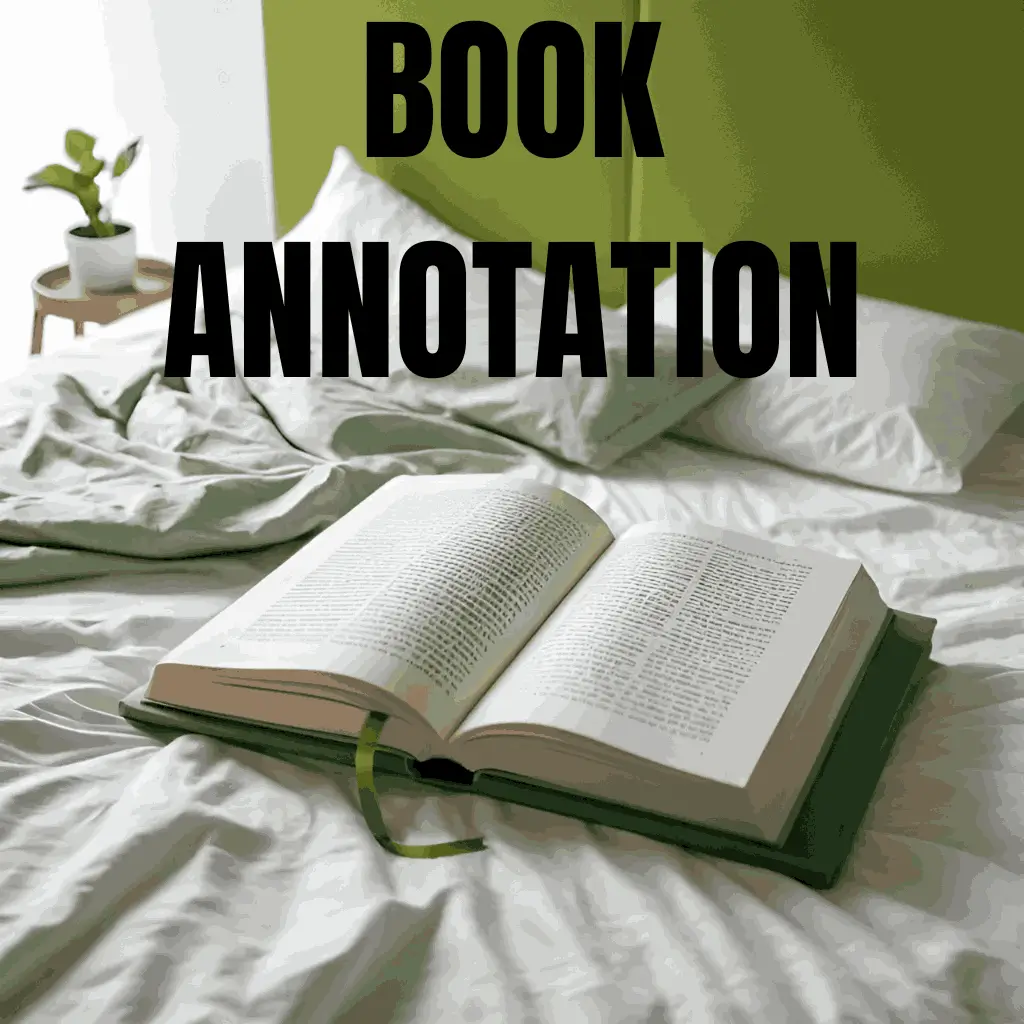In my previous post, I explored the concept of book annotation and its role in rendering reading more purposeful and impactful.
This time I am going to get specific: with 5 steps for how to annotate a book for better understanding of the words on the page and some tips on how to make it effective and fun! Annotation is more than note-taking — it is a step towards engaging with a text change how I experience reading.
Getting Started
1. Choose the Right Book
Step one is finding something I care at least a little about reading. It might be a novel I love, a textbook I must digest for class, or a non-fiction book that forces me to think differently. My preference for book types is ones I can write on (preferably physical, but I otherwise break out the digital highlighter). This way, I can highlight the pages, underline key points, and add my opinions.
2. Familiarize Myself with the Book
Instead of jumping right into annotations, I take a few minutes to scan the table of contents, chapters, and introduction of the book. This helps to give me an overview of the book’s structure and key topics. It helps me understand what parts I might like to annotate because I know what to expect.
3. Define My Purpose
I should explain why I am annotating this book. But if its just for my general knowledge, I will probably focus on quotable quotes + my takeaways. My annotations for academic purposes may include more thorough analyses and links to other material. This decision will help determine the notes and also help keep my focus.
4. Gather My Tools
My annotation kit: Pens, highlighters, sticky notes. A notebook. I do however enjoy having a variety of colored pens/highlighters to separate out my notes. Sticky notes help me if I want to avoid adding words to the text, and a tiny notebook is useful for longer reflections that I want to add, but cannot take place in the margin of the book.
5. Develop a Consistent System
Creating a consistent system for annotations is a game-changer. I like to use specific colors for different types of notes—for instance, blue for key ideas, red for personal thoughts, and green for memorable quotes. This way, when I look back, I can easily scan through and find exactly what I need.
What to Annotate
Once I’m set up, it’s time to start annotating! Here’s what I focus on to make my annotations meaningful:
1. Important Quotes or Passages
I like to underline or highlight quotes and sections that really stand out. These are usually passages that speak to me, capture a big idea, or offer a fresh perspective. By marking these key parts, I can easily remember and refer back to them later.
2. Key Terms or Concepts
I like to underline or highlight quotes and sections that really stand out. These are usually passages that speak to me, capture a big idea, or offer a fresh perspective. By marking these key parts, I can easily remember and refer back to them later.
3. Questions or Areas of Confusion
When I find something confusing or worth exploring, I’ll jot down a question mark or note my question in the margin. This way, it’s easy to revisit those parts later or bring them up in discussions.
4. Personal Insights or Connections
Sometimes, I draw connections between ideas or see how a concept relates to my own life. These insights are worth noting because they deepen my understanding and make the reading experience more meaningful.
5. Personal Reactions or Opinions
Reading often sparks strong emotions, and I enjoy capturing my first reactions. Adding a “Wow!” next to a plot twist or “I disagree” beside a point I don’t agree with makes the reading experience more engaging.
Choosing the Right Books to Annotate
Not every book is ideal for annotation. I prefer books that:
- Are meaningful to me or align with my interests
- Challenge me or are complex
- Are relevant for academic or personal growth
- Are part of a series or hold personal significance
Creating a Book Annotation Kit
My annotation kit includes:
- Different colored pens, highlighters, and sticky notes
- A notebook for extended thoughts
- Tabs or bookmarks to mark key sections
Tips for Consistency and Productivity
To stay consistent, I:
- Set aside regular time for annotation and review
- Stick to my annotation system
- Reflect on notes to reinforce understanding
Conclusion
Annotating books is a skill that improves with practice and patience. By developing my own system and following these tips, I can enhance my reading experience, deepen my understanding, and retain more information. Annotating allows me to connect with the book on a deeper level, making reading more interactive and enriching.




Pingback: How to Annotate a Novel: Tips for Engaging with Your Favorite Stories - leafnoted.com
Pingback: Top 10 Books to Start Annotating: A Guide for Beginners - leafnoted.com